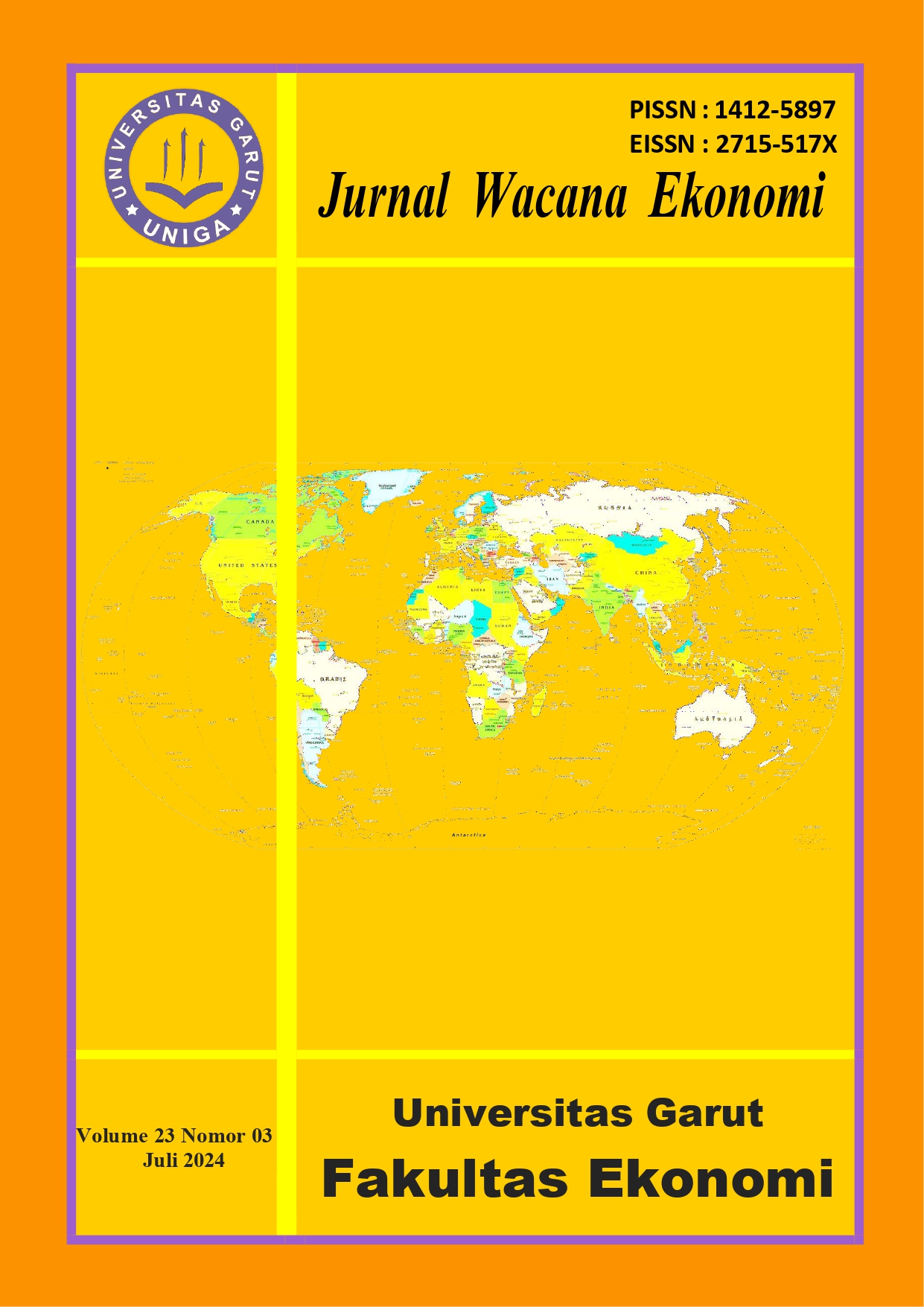Effectiveness of Kopiko Candy Product Placement Strategy in Korean Drama Doctor Slump: The Role of Product Involvement, Placement Prominence and Celebrity Endorsement
DOI:
https://doi.org/10.52434/jwe.v23i3.41544Keywords:
Product Placement, Product Involvement, Celebrity Endorsement, Brand Attitude, Brand Memory.Abstract
The product placement strategy is increasingly favored in global marketing, especially through Korean drama streaming services, which are typically produced in series format. Kopiko candy leverages the popularity of Korean dramas by employing product placement in the Korean drama Doctor Slump. This study aims to examine the influence of product involvement, placement prominence, and celebrity endorsement on brand memory and brand attitude. The research involved 157 respondents who are fans of Korean dramas residing in Indonesia, aged 18 and above, who have watched the Doctor Slump series from episodes 1-16 and are aware of the presence of Kopiko candy in the scenes of the drama. The results of this study indicate a positive and significant relationship between the variables of product involvement, placement prominence, and celebrity endorsement on brand memory. Additionally, product involvement and celebrity endorsement also have a positive and significant effect on brand attitude.
References
Burnasheva, R., & Suh, Y. G. (2021). The Impact of Celebrity Endorsement on Brand Loyalty: Mediating and Moderating Mechanisms. International Business Research, 14(2), 29. https://doi.org/10.5539/ibr.v14n2p29
Chae, M.-J., & Sun, H.-J. (2013). TV Product Placement in Korea. Journal of Promotion Management, 19(1), 54–75. https://doi.org/10.1080/10496491.2012.736461
Chan, F. F. Y. (2012). Product Placement and Its Effectiveness: A systematic Review and Propositions for Future research. The Marketing Review, 12. https://api.semanticscholar.org/CorpusID:167381823
Chebat, J.-C., & Michon, R. (2003). Impact of Ambient Odors On Mall Shoppers’ Emotions, Cognition, and Spending. Journal of Business Research, 56(7), 529–539. https://doi.org/10.1016/S0148-2963(01)00247-8
Corkindale, D., Neale, M., & Bellman, S. (2023). Product Placement and Integrated Marketing Communications Effects on an Informational TV Program. Journal of Advertising, 52(1), 75–93. https://doi.org/10.1080/00913367.2021.1981500
Eisend, M., & Tarrahi, F. (2022). Persuasion Knowledge in the Marketplace: A Meta?Analysis. Journal of Consumer Psychology, 32(1), 3–22. https://doi.org/10.1002/jcpy.1258
Grzyb, T., Dolinski, D., & Koz?owska, A. (2018). Is Product Placement Really Worse Than Traditional Commercials? Cognitive Load and Recalling of Advertised Brands. Frontiers in Psychology, 9. https://doi.org/10.3389/fpsyg.2018.01519
Guo, F., Ye, G., Hudders, L., Lv, W., Li, M., & Duffy, V. G. (2019). Product Placement in Mass Media: A Review and Bibliometric Analysis. Journal of Advertising, 48(2), 215–231. https://doi.org/10.1080/00913367.2019.1567409
Lee, M., & Faber, R. J. (2007). Effects of Product Placement on Online Games on Brand Memory: A Perspective of The Limited-Capacity Model of Attention. Journal of Advertising, 36(4), 75–90. https://doi.org/10.2753/JOA0091-3367360406
Li, S. (2023). Effectiveness of Product Placement in Streaming TV Series: The Roles of Product Involvement, Placement Prominence, and Celebrity Endorsement. Journal of Marketing Communications, 1–23. https://doi.org/10.1080/13527266.2023.2258374
Luttrell, R. (2018). Social Media: How to Engage, Share, and Connect. Rowman & Littlefield Publishers. https://books.google.co.id/books?id=ZN1iDwAAQBAJ
McClung, S., & Cleophat, C. R. (2008). Product Placement in African-American Targeted Shows on the Defunct UPN Network. Journal of Promotion Management, 14(1–2), 121–136. https://doi.org/10.1080/10496490802492523
Nielsen. (2022). Streaming Grew Its Audience in 2021; Drama, Reality and Kids’ Programming Led The Content Wars | Nielsen. Nielsen. https://www.nielsen.com/insights/2022/streaming-grew-its-audience-in-2021-drama-reality-and-kids-programming-lead-the-content-wars/
Park, C. W., & Lessig, V. P. (1981). Familiarity and Its Impact on Consumer Decision Biases and Heuristics. Journal of Consumer Research, 8(2), 223–231. http://www.jstor.org/stable/2488834
Petty, R. E., Cacioppo, J. T., & Schumann, D. (1983). Central and Peripheral Routes to Advertising Effectiveness: The Moderating Role of Involvement. Journal of Consumer Research, 10(2), 135–146. https://doi.org/10.1086/208954
Putra, Y. P. K., & Priansa, D. J. (2023). The Influence of Tik Tok Content Marketing on Brand Awareness Warung Kihaji, Sumedang City. Jurnal Wacana Ekonomi, 23(01), 024–034. www.jurnal.uniga.ac.id
Russell, C. A. (2002). Investigating the Effectiveness of Product Placements in Television Shows: The Role of Modality and Plot Connection Congruence on Brand Memory and Attitude. Journal of Consumer Research, 29(3), 306–318. https://doi.org/10.1086/344432
Russell, C. A. (2019). Expanding the Agenda of Research on Product Placement: A Commercial Intertext. Journal of Advertising, 48(1), 38–48. https://doi.org/10.1080/00913367.2019.1579690
Saepuloh, A., & Irfan, I. R. (2019). Anteseden Sikap Merek Terhadap Minat Pembelian Smartphone Xiaomi Pada Mahasiswa Perguruan Tinggi Swasta Di Kabupaten Garut. Jurnal Wacana Ekonomi, 18(03), 134–146. https://doi.org/http://dx.doi.org/10.52434/jwe.v18i3.632
Salsabila, N. A., & Mayangsari, L. (2020). “Keinginan atau Kebutuhan?”: Analisis Perilaku Impulsif dalam Pembelian Kosmetik Natural Online dari Aspek Eksternal dan Situasional. Jurnal Wacana Ekonomi, 19(03), 131–140. www.jurnal.uniga.ac.id
Shi, P., Lu, X., Zhou, Y., Sun, C., Wang, L., & Geng, B. (2021). Online Star vs. Celebrity Endorsements: The Role of Self-Concept and Advertising Appeal in Influencing Purchase Intention. Frontiers in Psychology, 12. https://doi.org/10.3389/fpsyg.2021.736883
Spears, N., & Singh, S. N. (2004). Measuring Attitude toward the Brand and Purchase Intentions. Journal of Current Issues & Research in Advertising, 26(2), 53–66. https://doi.org/10.1080/10641734.2004.10505164
Spilker, H. S., & Colbjørnsen, T. (2020). The Dimensions of Streaming: Toward a Typology of an Evolving Concept. Media, Culture & Society, 42(7–8), 1210–1225. https://doi.org/10.1177/0163443720904587
Tran, G. A., Yazdanparast, A., & Strutton, D. (2019). Investigating The Marketing Impact of Consumers’ Connectedness to Celebrity Endorsers. Psychology & Marketing, 36(10), 923–935. https://doi.org/10.1002/mar.21245
Tsai, M., Liang, W., & Liu, M.-L. (2007). The Effects of Subliminal Advertising on Consumer Attitudes and Buying Intentions. The International Journal of Management, 24, 3. https://api.semanticscholar.org/CorpusID:141343706
van Reijmersdal, E. (2009). Brand Placement Prominence: Good for Memory! Bad for Attitudes? Journal of Advertising Research, 49(2), 151–153. https://doi.org/10.2501/S0021849909090199
Wise, K., Bolls, P. D., Kim, H., Venkataraman, A., & Meyer, R. (2008). Enjoyment of Advergames and Brand Attitudes. Journal of Interactive Advertising, 9(1), 27–36. https://doi.org/10.1080/15252019.2008.10722145
Zaichkowsky, J. L. (1994). The Personal Involvement Inventory: Reduction, Revision, and Application to Advertising. Journal of Advertising, 23(4), 59–70. https://doi.org/10.1080/00913367.1943.10673459
Zajonc, R. B. (2001). Mere Exposure: A Gateway to the Subliminal. Current Directions in Psychological Science, 10(6), 224–228. https://doi.org/10.1111/1467-8721.00154





